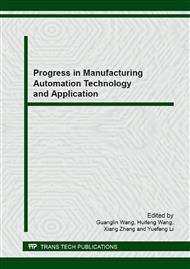p.91
p.97
p.101
p.105
p.113
p.122
p.128
p.133
p.138
Study on the Manufacturing Service Trading Platform Based on Processing Behavior
Abstract:
Collaboration, cloud computing have been identified as key business technology trends that will reshape enterprises worldwide. Cloud manufacturing (CM) - the manufacturing version of cloud computing can be implemented by various approaches. A part model based on processing behavior was developed and the definition, classification and data structure expressed by XML were presented. Processing behavior as trading service unit, can be requested or responded by designer clients or manufacturer clients on the trading service platform. Meanwhile, the data exchange protocol and trading mechanism were analyzed, and the workflow of the trading service platform was given. Finally, a case study of manufacturing trading service platform was demonstrated, which enable designers and manufacturing to make a deal, exploring the specific application of could manufacturing.
Info:
Periodical:
Pages:
113-121
Citation:
Online since:
September 2013
Authors:
Price:
Сopyright:
© 2014 Trans Tech Publications Ltd. All Rights Reserved
Share:
Citation:


